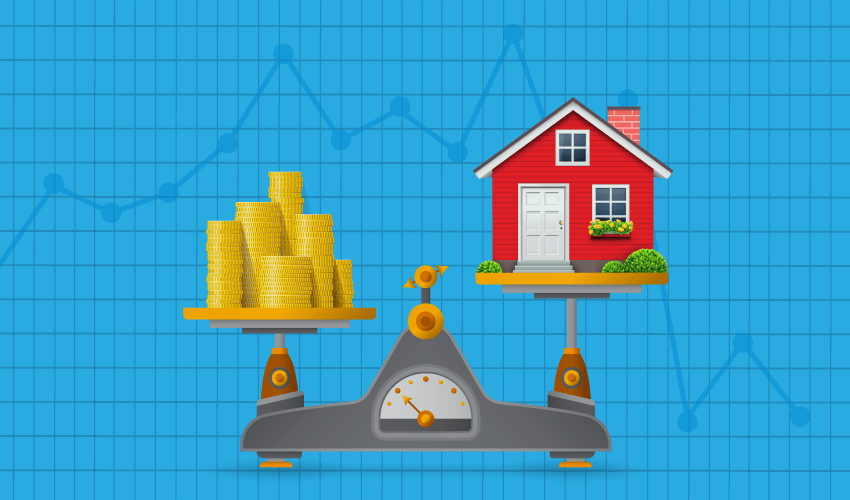The California Buyer Purchasing Power Index (BPPI) figure was +5.2 in March 2021. This positive figure tells us a homebuyer with the same income is able to borrow 5.2% more today than a year ago. The BPPI figure has remained positive since 2019 as a result of consistently lower mortgage interest rates. However, this positive level is down sharply from the +13.4 BPPI figure seen at the end of Q4 2020, the result of gradually rising mortgage interest rates over the first three months of 2021.
While homebuyers are able to borrow over 5% more today than a year earlier due to lower year-over-year interest rates, average California home prices have increased 12% from a year earlier as of January 2021. This discrepancy indicates today’s rising interest rates will inevitably check home prices, expected to pull prices back later in 2021.
In 2020, interest rates descended to historic lows due to efforts to stimulate lending despite job losses and tightening access to credit. Beginning in Q1 2020, the Federal Reserve (the Fed) dropped their benchmark interest rate to zero and began purchasing mortgage-backed securities, fulfilling their role as the lender of last resort to ensure mortgage originations continue. As a result, interest rates won’t rise significantly until 2023 or later.
first tuesday expects mortgage interest rates to remain around their present level in the months ahead, causing the BPPI figure to flatten out and eventually turn negative in the second half of 2021, a year after mortgage interest rates hit historic lows in Q4 2020. As we make our way through the ongoing recession, home sales volume will continue to decline, with prices following.
While positive today, the long-term outlook for the BPPI is a decades’ long period of descent as mortgage rates rise when the economy starts to recover, likely to begin in 2023-2024. Sellers can expect downward pressure on home prices in the coming months. First, as interest rates have increased slightly in Q1 2021, home price growth will be dampened due to decreased buyer purchasing power. Then, with the expiration of the foreclosure moratorium, scheduled for June 30, 2021, the coming wave of foreclosures will drag down homebuyer enthusiasm along with prices. Without the support of a jobs recovery, home prices will remain tenuous in 2021-2022.

Chart update 04/04/21
| Mar 2021 | Feb 2021 | Mar 2020 | |
| Buyer Purchasing Power Index (BPPI) | +5.2 | +9.3 | +8.9 |
About the BPPI
The Buyer Purchasing Power Index (BPPI) is calculated using the average 30-year fixed rate mortgage (FRM) rate from Freddie Mac (Western region) and the median income in California.
A positive index number means buyers can borrow more money this year than one year earlier.
A negative index figure translates to a reduced amount of mortgage funds available.
An index of zero means there was no year-over-year change in the amount a buyer can borrow with the same income. At a BPPI of zero, homebuyers cannot purchase at higher prices than one year before unless they resort to adjustable rate mortgages (ARMs) to extend their borrowing reach or greater down payment amounts.
As long-term BPPI trend declines, the capacity of buyers to borrow purchase-assist funds is reduced. In turn, buyers needing purchase-assist financing on average can only pay a lesser price for a home. To keep the inventory of homes for sale moving at the same pace, sellers will need to lower prices to accommodate buyer purchasing power or pull their properties off the market.
—
first tuesday journal online is a real estate news source. It provides analyses and forecasts for the California real estate market, and has done so since 1978.














